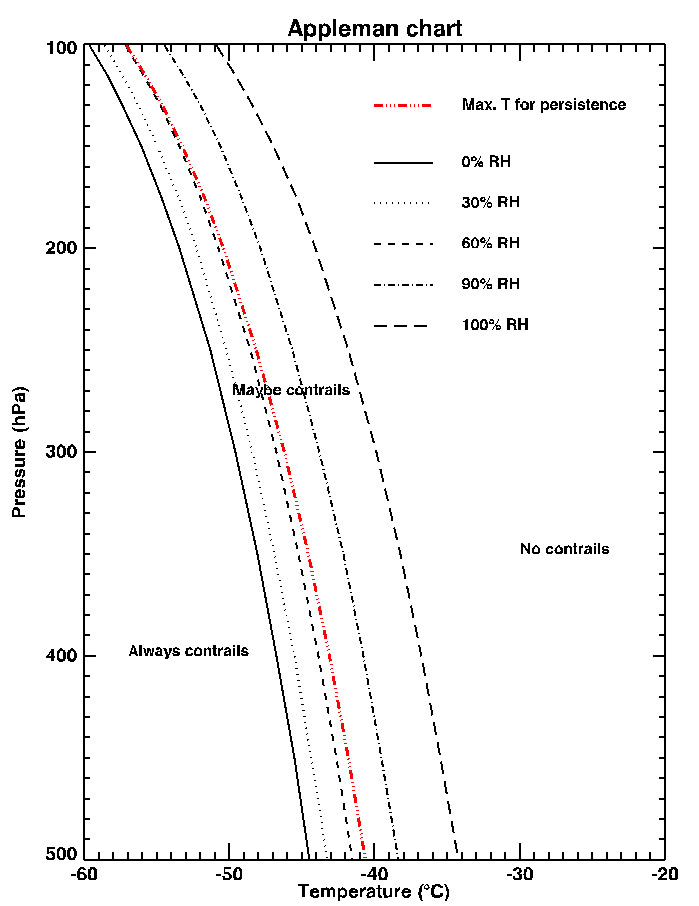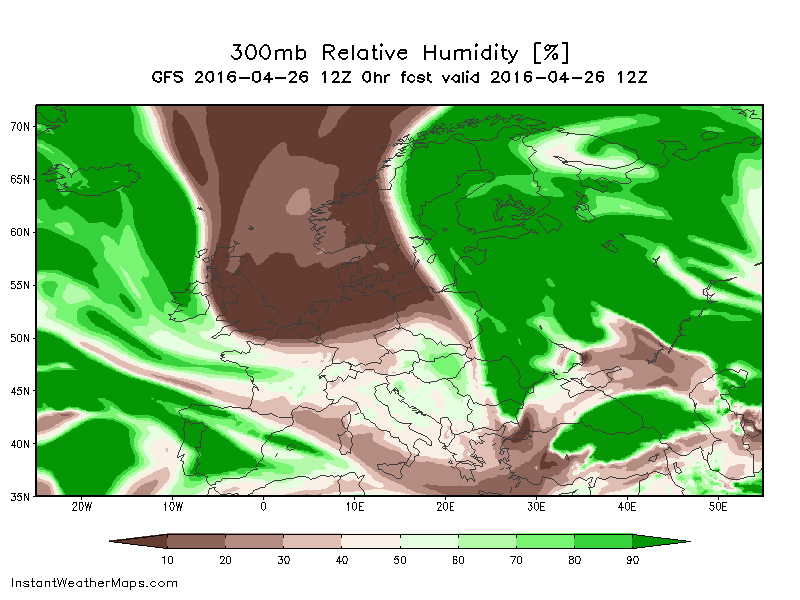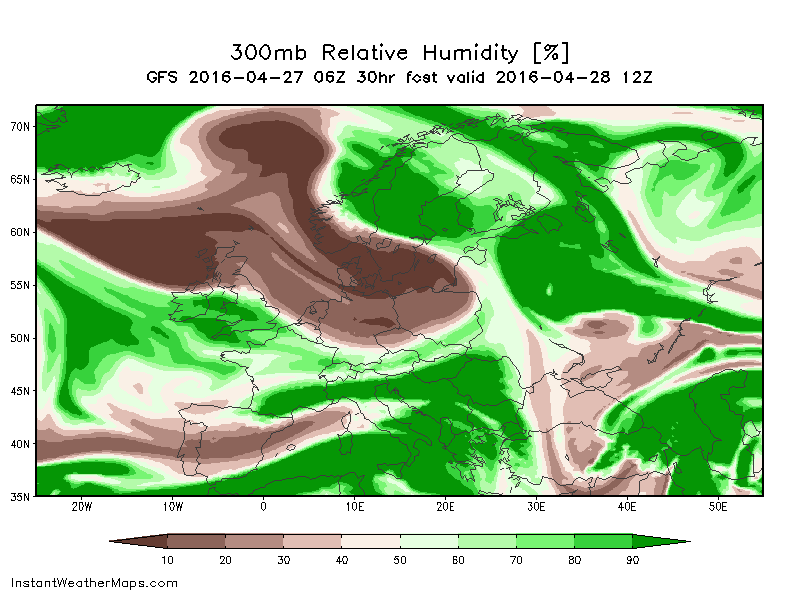I've started on a calculator to convert RHw (relative humidity with respect to water) to RHi (relative humidity with respect to ice).
https://www.metabunk.org/rh
Currently it just takes RHw, temperature and pressure, and then gives you the RHi, and the value of RHw at which RHi is 100% (i.e. the value at which contrails will persist)
Note the pressure has very little effect, the relationship is more one of temperature.
I will expand this calculator to make it more useful
Here's the code I use to convert RHW to RHI based on pressure and temp:
Code:
# convert RHw to RHi, as per
# http://www.esrl.noaa.gov/psd/people/ola.persson/polar_studies/refereed/Ice_sat_2000JC000411.pdf
# But see http://cires.colorado.edu/~voemel/vp.html
# ta = temperature of atmosphere, in Celsius
# p = pressure in hPa (hectopascals), which are the same as mb (millibars)
# note this is defined as accurate from -0C to -50C, but it's unclear how inaccurate it is
# at temperatures below -50C
def rhw2rhi(rh, ta, p)
e_sat_w_Ta = (1.0007 + 0.00000346 * p)*6.1121*Math.exp((17.966*ta)/(247.15+ta));
e_sat_i_Ta = (1.0003 + 0.00000418 * p)*6.1115*Math.exp((22.452*ta)/(272.55+ta));
return rh * (e_sat_w_Ta/e_sat_i_Ta);
endFrom:
http://www.esrl.noaa.gov/psd/people/ola.persson/polar_studies/refereed/Ice_sat_2000JC000411.pdf
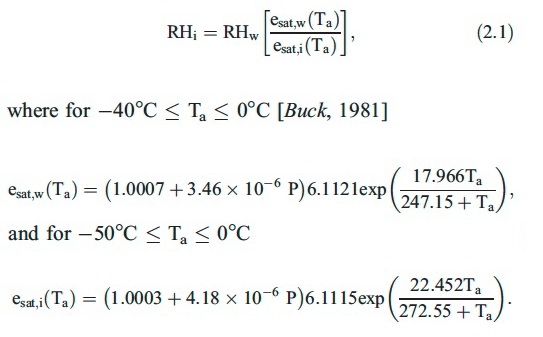
Note there seem to be several different ways of calculating the saturation vapor pressure.
The equations above are known as the Arden Buck equations, and come from Buck 1981 - New Equations for Computing Vapor Pressure and Enhancement Factor. They are what as know as "empirical" equations, in that they are simply designed to most closely fit the numbers observed in experiments, and the equations themselves do not necessarily have any really relationship to what is going on in the real physical world. The paper details how the experiments were carried out, and how the equations were worked out.
Essentially they are an approximation (over particular ranges of T) of formulae given by Wexler,
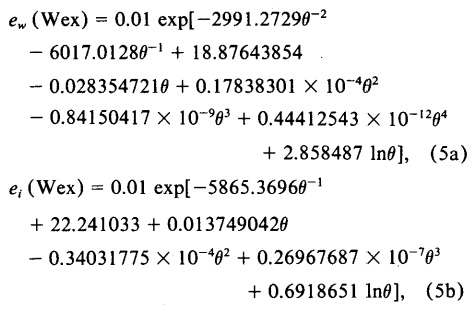
(Where θ is the temperature in Kelvin and exp and ln are natural exponent and logarithms)
Wexler's formulae in turn are derived from a variety of measurement made in the 1970s, after the older (and less accurate) Goff-Gratch equations were derived.
https://en.wikipedia.org/wiki/Goff–Gratch_equation
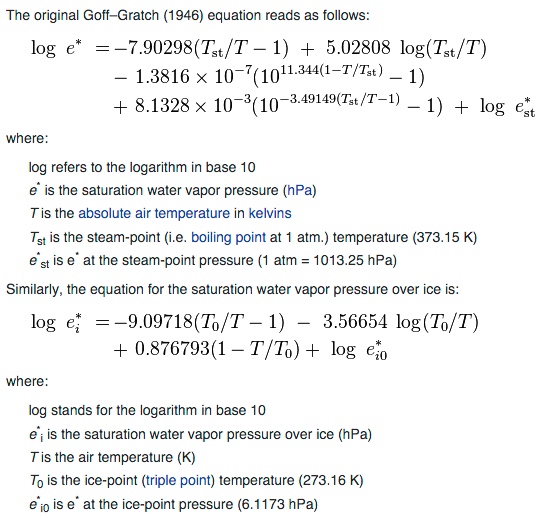
Several other different approximations are found here:
http://faculty.eas.ualberta.ca/jdwilson/EAS372_13/Vomel_CIRES_satvpformulae.html
But ultimately these are all just approximation to actual real world data. You could equally take the value from a table (interpolating for intermediate values, fractions of degrees), and get the same, or more accurate result, and computationally it would probably be faster.
Attachments
Last edited:

